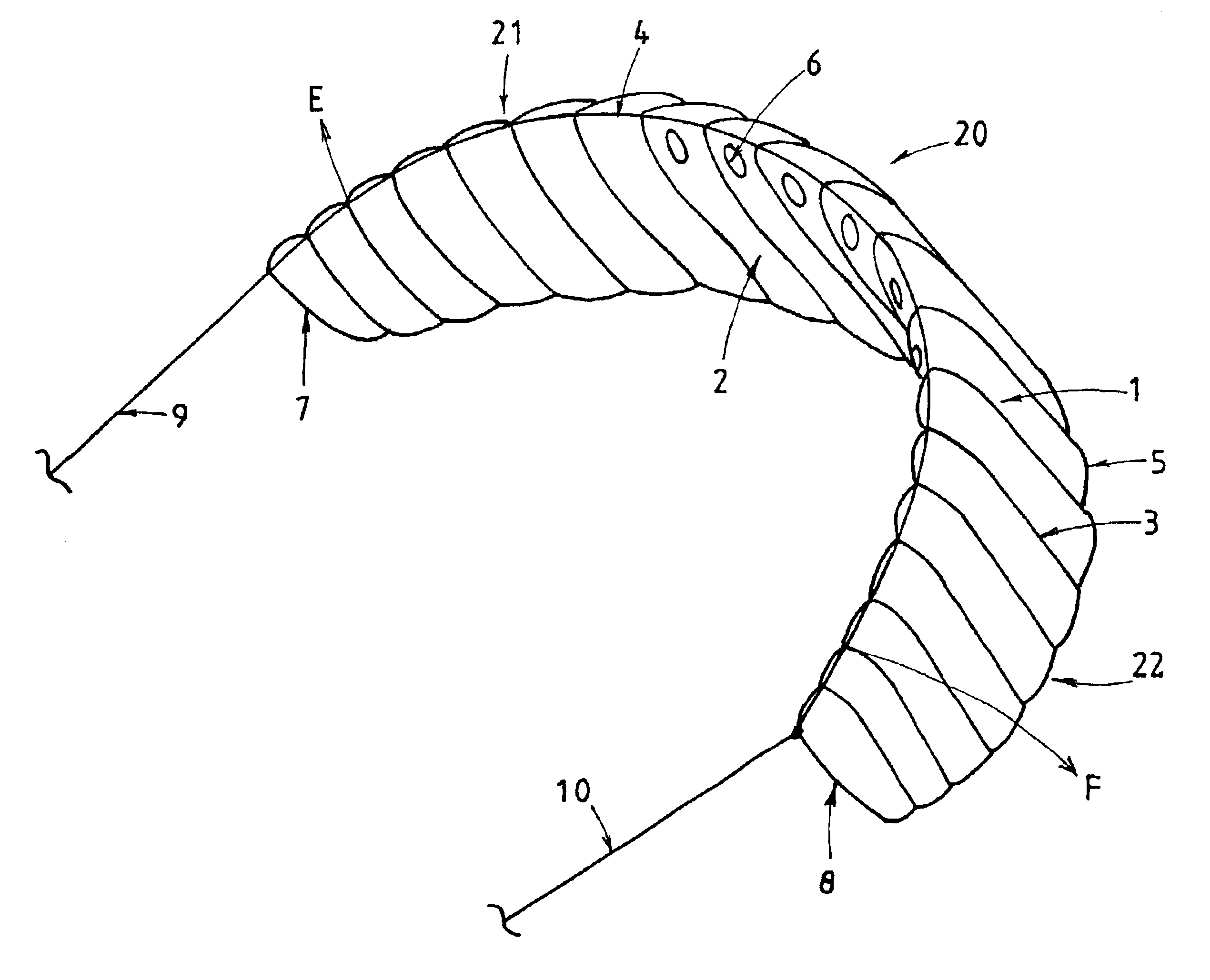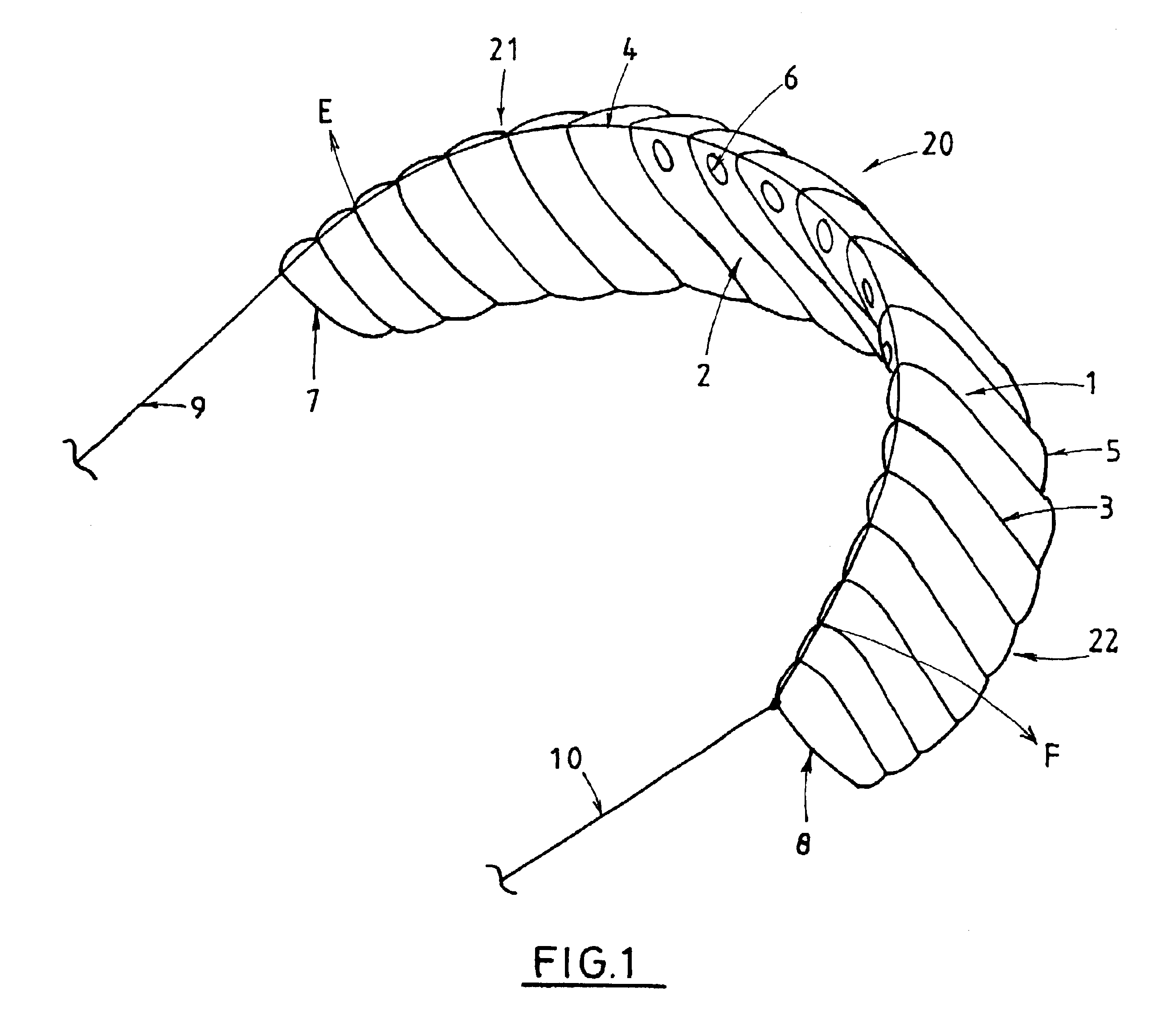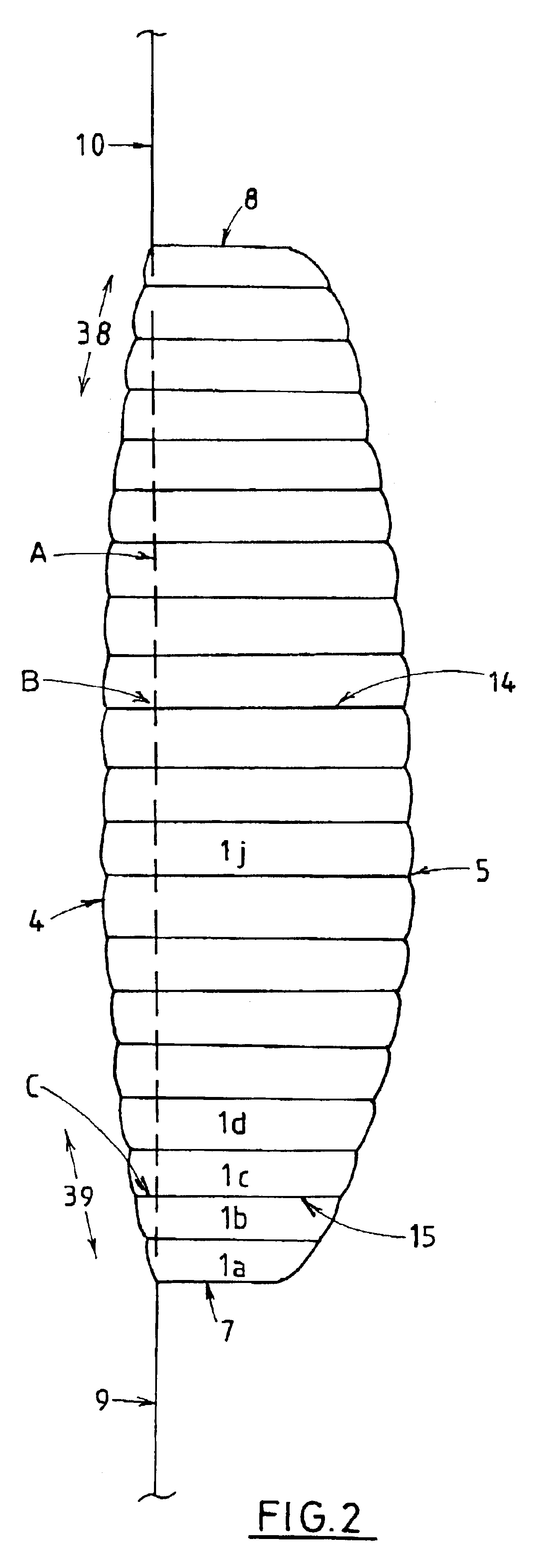Ram air inflated wing
a technology of air inflated wings and rams, which is applied in the direction of emergency apparatus, transportation and packaging, marine propulsion, etc., can solve the problems of bridle lines, unable to achieve sufficient spanwise beam strength, and small pressure differential availabl
- Summary
- Abstract
- Description
- Claims
- Application Information
AI Technical Summary
Benefits of technology
Problems solved by technology
Method used
Image
Examples
Embodiment Construction
A perspective view of a wing according to the invention is shown in FIG. 1. The wing is a double skinned ram air inflated aerofoil profile wing made from flexible lightweight material. One uniqueness of this wing is that it is able to maintain its spanwise, approximately, semicircular shape without any form of rigid or semi-rigid frame at all and without any flying line attachment directly or indirectly through two or more leg bridling to anywhere on the wing except at or near the wing tips 7 and 8.
The embodiment shown in FIG. 1 is a two line wing with single point line attachment, one at each tip 7 and 8. However, to enable greater control the wing can also be made for use with four flying lines, a front and rear line on each end of tip 7 and a front and rear line on each end of tip 8. There are a number of possible arrangements for flying line attachments and some of these will be discussed later.
The wing is constructed of an upper fabric skin surface 1 and a lower fabric skin sur...
PUM
 Login to View More
Login to View More Abstract
Description
Claims
Application Information
 Login to View More
Login to View More - R&D
- Intellectual Property
- Life Sciences
- Materials
- Tech Scout
- Unparalleled Data Quality
- Higher Quality Content
- 60% Fewer Hallucinations
Browse by: Latest US Patents, China's latest patents, Technical Efficacy Thesaurus, Application Domain, Technology Topic, Popular Technical Reports.
© 2025 PatSnap. All rights reserved.Legal|Privacy policy|Modern Slavery Act Transparency Statement|Sitemap|About US| Contact US: help@patsnap.com



